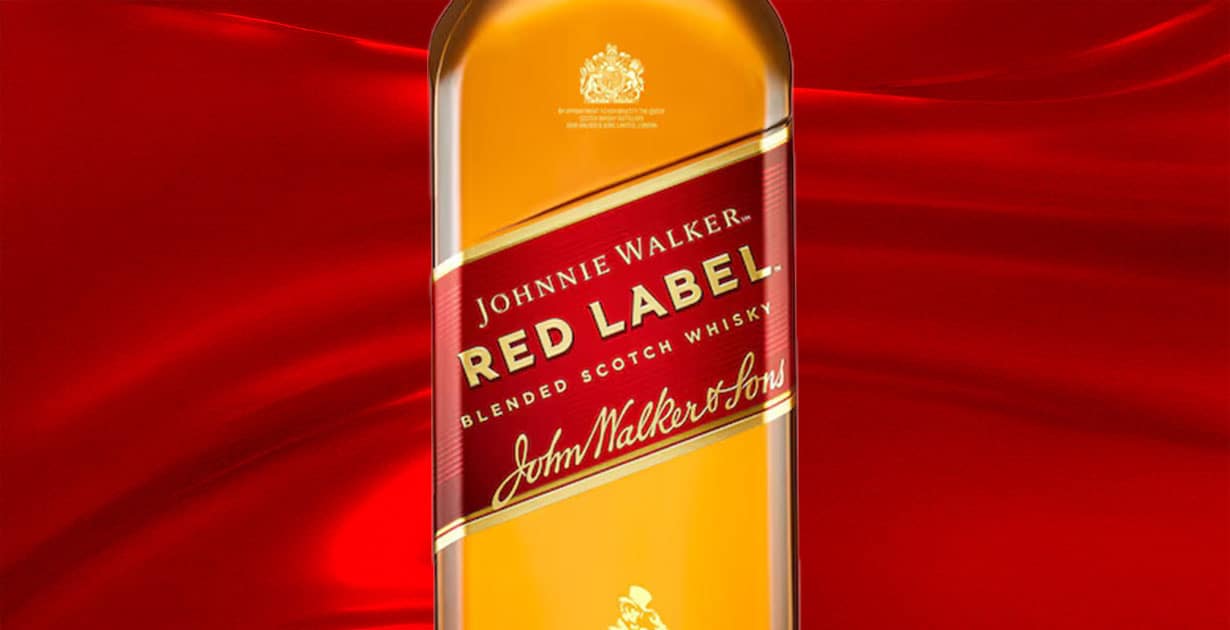
Johnnie Walker Red Label is one of the most recognisable scotch whiskies in the world, a blend that has travelled farther and poured more glasses than almost any other. Launched over a century ago, it was created not just as a whisky, but as a statement of global ambition. Lighter, livelier, and made for mixing, Red Label helped turn scotch from a local favourite into an international staple.
Origins and Rebranding Strategy
In 1909, the Walker family made a bold decision that would reshape whisky marketing: they rebranded their core blends by the colour of their labels. Until then, their whiskies carried names like “Special Old Highland,” often alongside an age statement. But customers had already developed their own shorthand, referring to the whiskies simply by the colour of the label, red or black.
Recognising the power of this grassroots branding, the Walkers leaned in. By officially adopting the names Red Label and Black Label, they created a simple, visual identity that transcended language barriers. Red Label became the more youthful, energetic blend, crafted to be approachable, consistent, and instantly recognisable across global markets.
The Character of Johnnie Walker Red Label
Johnnie Walker Red Label was originally crafted as a roughly nine-year-old blend, though it now carries no age statement to allow greater blending flexibility. From the outset, it was designed to be lighter and more vibrant than its darker-labelled sibling, perfectly suited to the popular “scotch and soda” serves of the early 20th century. Its character remains bold and approachable, with bright grain notes, gentle spice, and a hint of smoke, reflecting the inclusion of whiskies like Cardhu and Talisker.
Red Label wasn’t made for quiet contemplation; it was made to be mixed, shared, and enjoyed. This deliberate style made it ideal for introducing scotch whisky to a global audience unfamiliar with more intense or peated drams.
Red Label’s Role in Global Expansion
Red Label quickly became a driving force behind Johnnie Walker’s international success. Its consistent flavour profile, adaptability to mixing, and resilient packaging made it an ideal companion for global export. Whether poured in highball glasses in Tokyo or mixed into cocktails in New York, Red Label proved remarkably versatile. It met the tastes of emerging whisky markets without compromising the brand’s Scottish identity.
As globalisation accelerated through the 20th century, Red Label was often the first taste of scotch whisky many people experienced. More than just a product, it became a gateway to the world of Johnnie Walker, accessible yet unmistakably part of a storied heritage.
Legacy and Cultural Impact
Over a century after its debut, Johnnie Walker Red Label remains a fixture in bars, homes, and travel lounges around the world. Its affordability, mixability, and bold flavour have earned it enduring popularity, even as tastes evolve. It’s been referenced in films, music, and literature, a quiet constant in pop culture.
While connoisseurs may seek out older, rarer blends, Red Label is the blend that built the brand’s global reputation. It represents movement, accessibility, and the idea that good whisky doesn’t have to be exclusive. For many, Red Label was their first encounter with scotch, and it continues to be the dependable starting point in the Johnnie Walker journey.
Johnnie Walker Red Label: The Essential Blended Scotch
Johnnie Walker Red Label isn’t just a whisky, it’s a masterclass in branding and a cornerstone of scotch whisky’s global story. Created to be bold, mixable, and unmistakably Johnnie Walker, it brought scotch into the modern age and into millions of glasses around the world. More than 100 years on, it remains a symbol of movement, approachability, and enduring appeal.
Read the full article at Red Label – The Whisky That Taught the World to Drink Scotch
